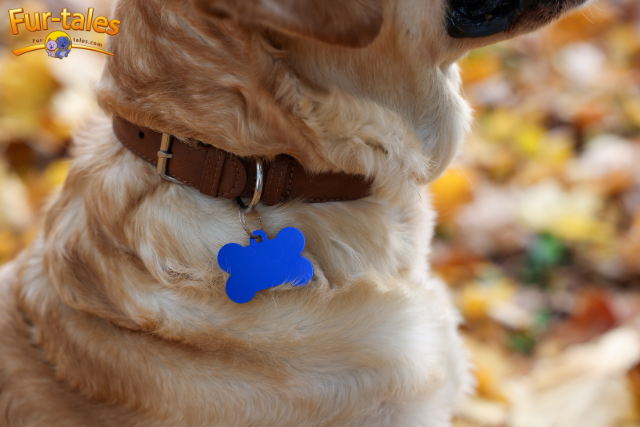
The Importance of Pet ID Tags: Identification and Safety
If you’ve ever experienced that heart-stopping moment when your dog slips out of the backyard or your cat darts through an open door, you know the fear and helplessness that follow. In those critical moments, one simple item can make all the difference: a pet ID tag.
While microchips and GPS collars are valuable tools, a visible ID tag remains one of the fastest, easiest, and most effective ways to reunite lost pets with their owners. It’s a small accessory with a huge impact on safety, identification, and peace of mind.
In this guide, we’ll explore the importance of pet ID tags, compare them to other identification methods, and provide tips on choosing the right tag for your furry friend. Whether you’re a new pet parent or a long-time animal lover, this is essential reading for ensuring your pet’s safety.
What Is a Pet ID Tag?
A pet ID tag is a small, durable piece—usually made of metal or plastic—attached to your pet’s collar. It typically includes:
- Your pet’s name
- Your phone number(s)
- Optional information like your address, medical needs, or a microchip notice
These tags provide instant access to your contact information for anyone who finds your pet, without needing a scanner or special equipment.
Why Pet ID Tags Are So Important
1. Immediate Identification
Unlike microchips, which require scanning at a shelter or vet, an ID tag offers visible, instant identification. If someone finds your lost pet, they can call you on the spot without waiting or visiting a facility.
2. Faster Return Times
Studies show that dogs and cats with ID tags are returned home faster and more frequently than those without. Many pets never make it to a shelter because they’re returned by a good Samaritan who read the tag.
3. Minimizes Shelter Stays
When pets are quickly identified, they spend less time in shelters, which reduces stress, risk of illness, and the potential for being mistakenly rehomed or euthanized.
4. Sends a Clear Message
A tag signals to others that your pet is cared for and not a stray. It can also include health or behavioral info (like “I’m diabetic” or “Nervous—do not chase”) that helps prevent mishandling.
Pet ID Tags vs. Microchips: A Comparison
| Feature | Pet ID Tag | Microchip |
|---|---|---|
| Visibility | Visible on collar | Not visible, needs a scanner |
| Cost | Low ($5–$20) | Moderate ($25–$50) + vet fee |
| Ease of Use | Anyone can read | Requires professional scanner |
| Data Updateability | Easily replaced or edited | May require service login/fees |
| Weather Resistant | Needs replacement if damaged | Protected under skin |
| Battery Required | No | No |
Conclusion:
Both are important and work best together. Microchips offer permanent, internal ID, while ID tags provide immediate, visual identification that’s accessible to anyone.
Choosing the Right Pet ID Tag
When selecting an ID tag, consider the following factors:
1. Material
- Metal (Aluminum, Stainless Steel): Durable, long-lasting, resistant to wear.
- Plastic: Lightweight and colorful but may fade or break over time.
- Silicone: Quiet and flexible, ideal for noise-sensitive pets.
2. Size and Shape
Choose a size that’s appropriate for your pet’s size and comfort. Common shapes include circles, bones, hearts, or novelty designs.
3. Attachment Type
- Split Rings: Most common, like a keyring
- S-Hooks: Require pliers to attach but are secure
- Slide-On Tags: Great for active pets, with no dangling pieces
4. Engraving Quality
Laser engraving lasts longer than printed text. Ensure the text is deep, legible, and resistant to fading.
What Information Should Go on a Pet ID Tag?
Keep it simple, clear, and useful. Here’s what to include:
- Pet’s Name: Helps create a connection with the finder.
- Your Phone Number: Include area code. A cell number is best for quick contact.
- Secondary Contact: A backup contact ensures help is available if you’re unreachable.
- Optional Info:
- “Microchipped” (encourages scanning)
- Medical needs (“Needs medication”)
- Home address (if space allows)
- Reward offer (“Reward if found”)
Avoid including sensitive information like your full name or detailed address if privacy is a concern.
Pet ID Tags for Different Species
Dogs
Dogs are more likely to be found by people while wandering outdoors. Their tags should be large enough to read quickly and securely fastened.
Ideal for:
- Walkers, runners, dogs in open yards
- Adventurous breeds like Huskies, Beagles, and Labs
Cats
Indoor cats still escape—screens break, doors are left open, or they dash during stressful moments. Cat tags should be small and lightweight to avoid neck strain.
Pro Tip:
Use a breakaway collar with the tag. This prevents choking if your cat gets caught on something.
Creative Ideas for Pet ID Tags
While function comes first, your pet’s ID tag can also reflect their personality. Popular customization ideas include:
- “I’m Lost—Call My Human!”
- “If I’m Alone, I’m Lost”
- “Treats? Call This Number!”
- QR Code that links to an online profile
- Personalized charm or color to match their style
These small touches make your pet’s tag more engaging and may encourage quicker help from strangers.
When to Replace or Update Pet Tags
Like any gear, pet tags can wear out or become outdated. Replace tags if:
- Your contact info changes
- The tag becomes scratched or unreadable
- Your pet gets a new collar style
- The tag breaks or falls off
- You move or change emergency contacts
Tip: Check your pet’s tag every 3–6 months for readability and durability.
Are Digital Tags Worth It?
Some modern tags use QR codes, NFC chips, or GPS links. These allow finders to scan the tag with a smartphone and access an online profile with:
- Medical records
- Owner contact info
- Return instructions
They can be helpful, but they require a tech-savvy finder and internet access. Always pair digital tags with a simple engraved tag for guaranteed usability.
FAQs: Pet ID Tags and Safety
Q: Is a microchip enough if my pet already has one?
A: No. Microchips are vital but require a scanner. An ID tag offers immediate, visible info to anyone.
Q: Should indoor cats wear tags too?
A: Yes. Many lost cats are indoor-only pets. Accidents happen, and tags help bring them home faster.
Q: What if my pet loses their collar?
A: That’s where a microchip adds backup protection. Use both systems for best results.
Q: Can I include my email on the tag?
A: Yes, but a phone number is more urgent and likely to be used quickly.
Q: How do I quiet a noisy metal tag?
A: Use a silicone tag, a rubber silencer, or a tag pouch that reduces clinking sounds.
Final Thoughts
A pet ID tag may seem like a small detail, but when your pet’s safety is on the line, it can be the most important accessory they wear. It bridges the gap between panic and peace, offering hope in moments of uncertainty.
Whether you live in a quiet neighborhood or a bustling city, accidents happen. Doors open. Gates swing wide. Collars break. But when your pet wears a legible, secure, and up-to-date ID tag, you’re giving them the best chance of finding their way back home.
Investing a few dollars and minutes into a quality tag could save you hours of worry—or even save your pet’s life.
Image Designed Using Canva
